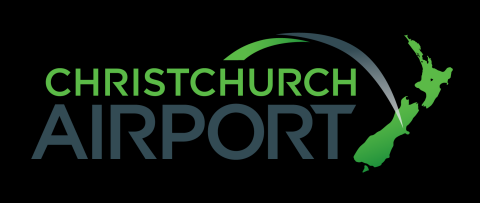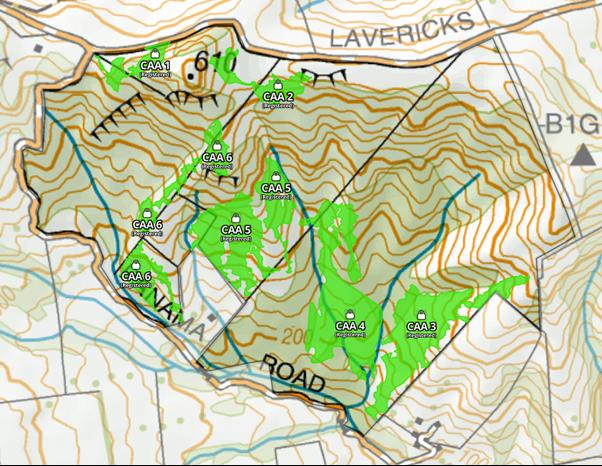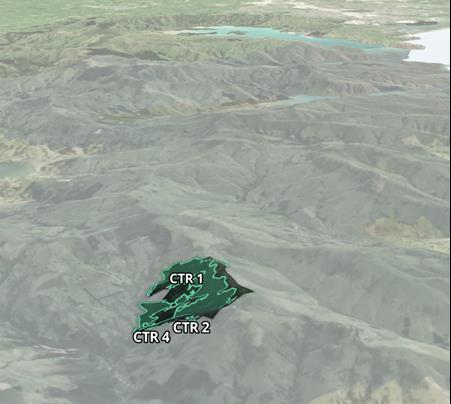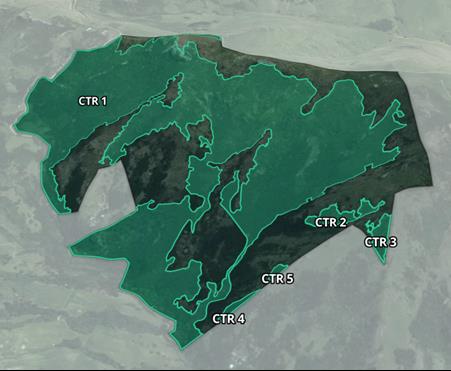
PO Box 14001
Christchurch 8544
New Zealand
Telephone (+64 3) 358 5029
christchurchairport.co.nz
15 September 2023
Duncan Kenderdine
Email: [FYI request #23893 email]
Tēnā koe Duncan
OFFICIAL INFORMATION ACT 1982 (OIA) – REQUESTS FOR INFORMATION -
CHRISTCHURCH INTERNATIONAL AIRPORT LIMITED (CIAL)
1. We write further to our email of 21 August 2023, acknowledging receipt of your OIA
request (the
Request) of 20 August 2023 seeking information (if held by CIAL) in
relation to Christchurch Airport’s native forest investment.
We have answered your Request in this letter and for completeness, we set out your
Request below:
Request: Received 20 August 2023 – Christchurch Airport’s native forest
investment
“Could you please provide research and other documentation which shows the
details of the methodology, volume and impact of carbon removal via your native
forest investment programme? How much CO2 and over what timeframe?
Please advise how long this saving is locked in for?”
2. CIAL rely on external expertise to provide it with its voluntary offsets (noting CIAL
is not obligated to purchase offsets) but undertakes a process to understand what
methodology is followed and has that independently assured. CIAL purchases offsets
after the fact (as is normal practice), and it waits until its Greenhouse Gas Inventory
has been independently audited for the year, in order to know how many offsets it
would like to purchase.
CIAL believes emissions reduction actions must be prioritised over offsetting
wherever possible. Offsetting is a useful tool, once available reduction technologies
have been exhausted, but not in place of reduction activities.
From FY21, when CIAL achieved its 90% reduction in Scope 1 and 2 emissions, and
with no further unbudgeted large scale reduction actions available to it, CIAL sought
to balance hard-to-abate residual emissions with high-quality carbon removals (also
known as carbon credits).
CIAL’s preference to offset its Scope 1 & 2 emissions is to do so by supporting local
native forest restoration via the purchase of New Zealand Units (
NZUs) through
Carbon New Zealand Limited.
NZUs from native forests can be used for voluntary carbon crediting. The Joseph
Langer Charitable Trust (the
Trust) owns land on Banks Peninsula. The Trust has
been issued government-verified NZUs which recognises the carbon sequestered
through their biodiverse, community-led and native forest restoration.
CIAL also chooses to offset controllable Scope 3 emissions, and its preference is to
do so through supporting projects in the Pacific Island region. Initially, CIAL chose
forestry projects because these were available and independently authenticated.
Offsets - Carbon Removals Scope 1 & 2 Emissions
Forest type
The section of forest that has been assessed is an exclusively biodiverse native
broadleaved hardwood forest, surrounded by areas of scrub, ferns, tussock, and
scattered shrubs at earlier stages of regeneration. The site is significant because it
is the only known locality on the Banks Peninsula for Gentian, Gentianella serotina,
a small montane to sub-alpine flower that grows with snow tussock. There are
numerous other native species of note, including several which are uncommon in
the region.
Location
The forest is located on land owned by the Trust, close to the township of Le Bons
Bay. The land parcels are: 623997; CB506/73; and CB9F/216; - as recorded on the
New Zealand Land Registry. The ETS registered native forest parcels are highlighted
in green in Figure 1 ETS registered forest overlaid on topographical map outlined
below.
Total area
A total of 37 hectares of land has been registered with ETS to date, for the post-
1989 regenerating native forest. 735 NZUs have been issued to this area in
recognition of the carbon sequestered over the 2018 to 2022 period.
Adjacent to the above 37 hectares, is an additional 120 hectares of non ETS forest.
It is pre-1990 regenerating native forest and is also sequestering carbon due to the
Trust's ongoing conservation efforts. The non-ETS registered native forest areas are
highlighted in Figures 2 and 3.
Management
The historical land use prior to the native forest was pastoral farming. All of this area
was land for pastoral farming prior to 1990. Due to stock exclusion and ongoing
restoration activities, this land is regenerating into native bush. Carbon New Zealand
Limited checks each NZU is exclusively from native forest using the Ministry for
Primary Industries land classification.
Additionality
This management is consistent with the principles set out in the Integrity Council for
the Voluntary Carbon Market definition:
“The greenhouse gas emission reductions
or removals from the mitigation activity shall be additional, i.e., they would not have
occurred in the absence of the incentive created by carbon credit revenues”.

The native forest NZUs are consistent with the expectations of additionality under
New Zealand’s commitments to and reporting for the United Nations Framework
Convention on Climate Change, given the ETS is fully compliant with the framework.
Permanence
NZU’s meet the obligations set out in the Climate Change Response Act 2002. All
CIAL’s NZUs are measured by CarbonCrop who provide ongoing monitoring for
reversal events. As part of CarbonCrop’s standard compliance assurance process, all
registered areas are assessed for reportable forest loss using AI models applied to
hyperspectral satellite data, on an annual basis. This occurs prior to the filing of
emissions returns and issuances of further NZUs for the relevant period for the
registered forest. At the point of filing emissions returns, a subsequent approval
means permanence is verified by the Ministry of Primary Industries.
All parcels of Trust land have been placed under a government-recognised
conservation covenant, with the Banks Peninsula Conservation Trust, and the land
is now a Department of Conservation scenic reserve.
Double counting
The Trust does not have any conflicting carbon credit registration with its registered
ETS forest. NZUs are transacted on the government-operated Emissions Trading
Register and cancelled on this register.
CIAL is the guaranteed beneficial owner of NZUs which are held and cancelled on
the ETS register by Carbonz. Please refer to the Carbon New Zealand Limited terms
and conditions under ‘The New Zealand Emissions Trading Scheme Carbon Credits’
in Appendix 310.
Figure 1 - ETS registered forest overlaid on topographical map:
Figures 2 and 3 - Non-ETS registered forest adjacent to ETS registered forest close-
up and from a distance for location context:


Airport Carbon Accreditation Offset Removal Application Form
As an airport that participates within the Airport Carbon Accreditation Programme,
CIAL’s Scope 1 & 2 offsets are also subject to their additional layer of scrutiny. This
is set out in their ACA Offset Merged Guidance Document 2023.
CIAL’s application to have its offsets independently assessed according to the ACA
best practice criteria involved the following information (and supporting documents
which CIAL is sharing with you):
Name of airport
Christchurch International Airport
City/Country
Christchurch, New Zealand
IATA Code CHC
ACI Region Asia Pacific Region
Passenger numbers & year
3.26 million in 2022
Aircraft movements & year
84,330 total aircraft movements
Date
9 May 2023
Latest carbon footprint & year
219t CO2e FY22
Offset removal target
120% of remaining Scope 1 and 2
Baseline year & carbon footprint
3542t CO2e FY15
Amount of offset removals
262tCO2e
Proposed Offset programme
New Zealand Units (NZUs) of permanent native forestry
Project type
Afforestation/ Reforestation
Project name
Native Forestry in Langer Reserve, Banks Peninsula,
Canterbury, New Zealand
Short project description
Reforestation of permanent native forestry on previous
pastoral farming land in the Banks Peninsula region.
Carbon removal units (NZUs) through forestry
sequestration are registered under the New Zealand
Emissions Trading Scheme.
Identification number
NZ-10716
Methodology/Certification Standard
Ministry for Primary Industries New Zealand Units
Web link
Here is a link to the specific project:
https://www.jlct.org.nz Here is a link to the Ministry for Primary Industries
information on the ETC:
https://www.mpi.govt.nz/forestry/forestry-in-the-
emissions-trading-scheme/
Other pertinent information
 Offsets - Controllable Scope 3 Emissions
Offsets - Controllable Scope 3 Emissions
Christchurch Airport voluntarily purchase additional carbon offset removals with
respect to its controllable Scope 3 emissions. This is not a requirement of the Airport
Carbon Accreditation Programme.
They support Pacific Island Rainforest Protection Projects (
VERS) in Babatana, on
the island of Choiseul, Solomon Islands through the purchase of voluntary carbon
offset removals.
Activities in CIAL’s Scope 3 supply chain for voluntary removals
The requirement for what should be included (and excluded, which was determined
to be full flight emissions and ground transport connections) was independently
determined by EKOS, a New Zealand based leader in Carbon Management best
practice. CIAL’s total Scope 3 carbon offset VERS for FY22 amounted to 1717tCO2e,
which when CIAL applied its intention to take responsibility for 120% of those
emissions, amounted to the purchase of 2,060 units.
Scope 3 Activity
Activity Data Units
tCO2e
Category 3: Indirect GHG emissions
3
from Transportation
3.2
APU usage
10 minutes
591
3.3
Engine run-ups
669 run-ups
193
Ground support equipment, tenant,
3.4
diesel
173,048 litre
466
3.5
Transmission & distribution losses
17,546,759 kWh
171
3.7
Business travel
3.7.1
International, long-haul, business
63,013 pax.km
14
3.7.2
International, short-haul, business
9,266 pax.km
1
3.7.3
International, long-haul, economy
N/A
pax.km
3.7.4
International, short-haul, economy
51,973 pax.km
4
3.7.5
Domestic, national average
136,613 pax.km
22
3.8
Upstream transportation and distribution of goods
3.8.2
Fuel extraction, production, and distribution
3.8.2.1 Diesel
242,944 litres
1
3.8.2.2 Petrol
5,687 litres
0
3.8.2.3 LPG
27,279 litres
0
Downstream transport and distribution
3.9
of goods
N/A
Category 4: Indirect GHG emissions from products used by an
organization
226
4.1
Purchased goods & services
N/A
4.2
Accommodation
4.2.1
New Zealand
113 room.night
1
4.2.2
Australia
26 room.night
1
4.2.3
Singapore
8 room.night
0
4.2.4
Canada
2 room.night
0
4.3
Capital goods
N/A
4.4
Disposal of solid and liquid waste
Waste to landfill with landfill gas
4.4.1
recovery
329,805 kg
68
4.4.2
Water supply
304,104 m3
10
4.4.3
Trade wastewater
304,104 m3
146
4.5
Use of assets
N/A
Category 5: Indirect GHG emissions associated with the use of
5
products from the organization
0
N/A
6
Category 5: Indirect GHG emissions from other sources
27.7
6
De-icing, tenant
31,859 litres
27.7
CIAL Scope 3 2060 VER units are supplied and certified to the Plan Vivo international
carbon offset standard.
3. We trust we have answered your requests for information. If you require any further
information or if we have in some way misinterpreted your requests, please let us
know.
4. You have the right to seek an investigation and review by the Ombudsman of the
decisions contained in this letter. Information about how to contact the Ombudsman
or make a complaint is available at www.ombudsman.parliament.nz or freephone
0800 802 602.
Ngā mihi
CIAL LEGAL TEAM
Email: [Christchurch International Airport Limited request email]




